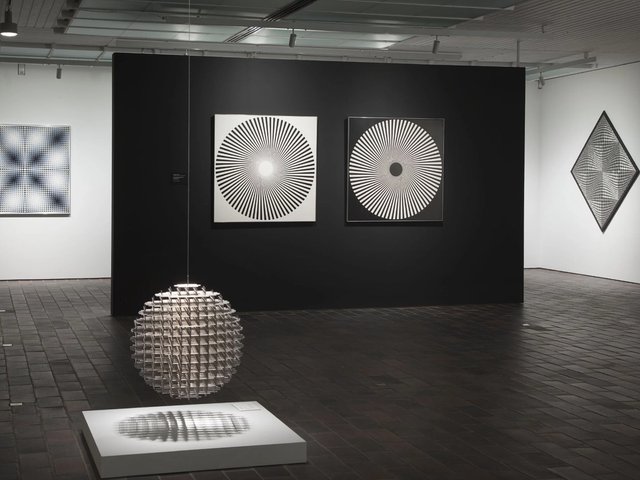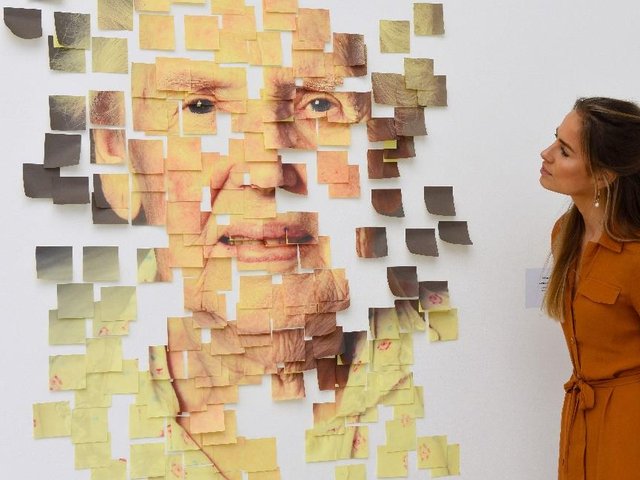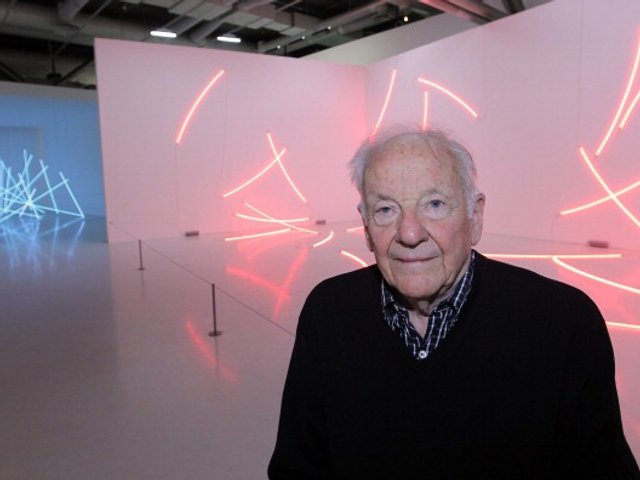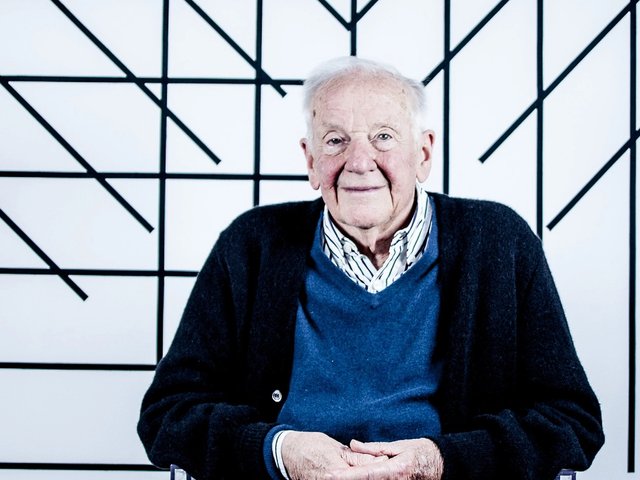Audiences in London can delve deeper into the practice of one of France’s most influential artists—90-year-old François Morellet—who is the subject of two major concurrent shows at Annely Juda Fine Art (until 24 June) and the Mayor Gallery (until 27 May).
Morellet, who has been making art for more than 70 years, is known for his works exploring geometric abstraction that draw on rigorous mathematical systems. But the artist’s sense of mischief means that chance also comes into play on viewing his kinetic and optical experiments.
“We thought it would be a nice tribute to the artist to run shows at the same time, celebrating his birthday through different periods of his work,” says Christine Hourdé of Mayor Gallery, which is showing 16 works drawn from the secondary market and the collection of Henri Chotteau.
All of the works on show at the Mayor Gallery were made by Morellet in his studio in Cholet, western France, between 1969 and 1974, apart from a work shown in Zagreb, Croatia, in 1962. Works on display include the silkscreen pieces 5 trames 85°, 87°5, 90°, 92°5, 95° (1969) and Du vert à l’orange (1971).
Dan Galeria space in São Paulo, Brazil, is currently hosting a parallel show featuring works from the same period (until 31 May). Meanwhile, Annely Juda is showing 16 new and recent neon works including Contresens no2 (2015) and Mal Barré après réflexion no7 (2015). All the works across all three shows are for sale.
In the catalogue for the Mayor Gallery show, the French art historian Serge Lemoine outlines Morellet’s methods and motivation, saying: “Between 1953 and 1958, François Morellet creates his own language, made of parallel or concentric lines, of squares or triangles, stripes or dashes, black and white or limited colours. He had defined his method, the system in which he includes the element of chance to counteract even more with the arbitariness of any decision of artistic order… he will eventually seek the viewer’s participation.”
An interview in the catalogue with Hans Ulrich Obrist, the artistic director of London’s Serpentine Galleries, is just as insightful. Morellet’s pivotal role in the launch of the research group GRAV (Groupe de Recherche d’Art Visuel) in 1961 is discussed, and why the collective was so keen on unusual art materials.
“With my friends from GRAV [including Julio Le Parc] we wanted to give an end to the conventional artistic practice of canvases, paintbrushes and easels,” Morellet says. “In my quest for new non-artistic materials, the neon had all the qualities I liked: it was perfectly linear; the instant lighting allowed rhythms of brutal flashing; it was from an industrial origin; its use for public advertising was very vulgar at the time, which I liked.” Crucially, he also points out that without humour, “everything can become indigestible”.





